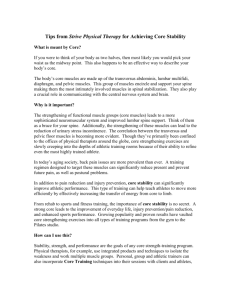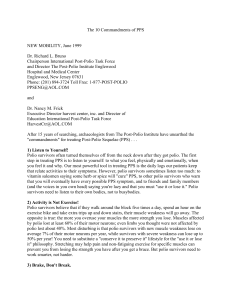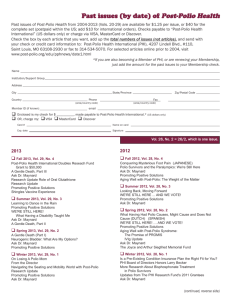POST-POLIO SYNDROME
advertisement
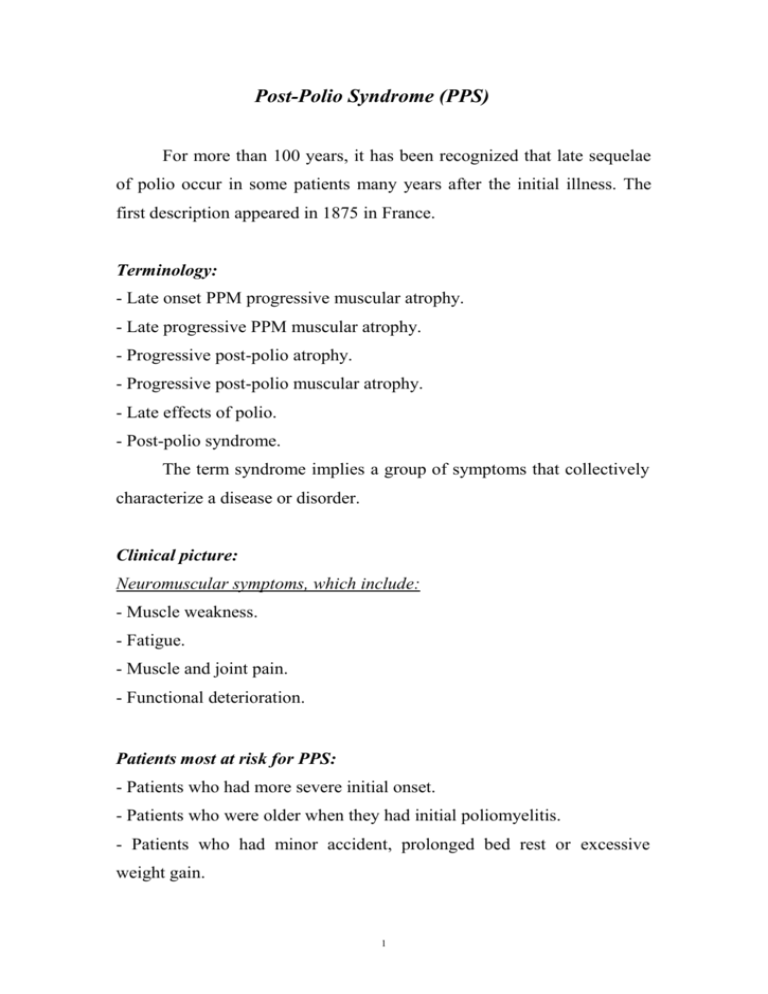
Post-Polio Syndrome (PPS) For more than 100 years, it has been recognized that late sequelae of polio occur in some patients many years after the initial illness. The first description appeared in 1875 in France. Terminology: - Late onset PPM progressive muscular atrophy. - Late progressive PPM muscular atrophy. - Progressive post-polio atrophy. - Progressive post-polio muscular atrophy. - Late effects of polio. - Post-polio syndrome. The term syndrome implies a group of symptoms that collectively characterize a disease or disorder. Clinical picture: Neuromuscular symptoms, which include: - Muscle weakness. - Fatigue. - Muscle and joint pain. - Functional deterioration. Patients most at risk for PPS: - Patients who had more severe initial onset. - Patients who were older when they had initial poliomyelitis. - Patients who had minor accident, prolonged bed rest or excessive weight gain. 1 Common muscles affected: - Previously affected muscles which recovered or those which were not previously affected. - Symmetrical or asymmetrical affection. - Unilateral or bilateral affection. Percentage of PPS: - Accurately unknown (25 - 40 %). - It occurs after 30 to 40 years from the initial onset (8 to 50 years). Etiology: 1. Functional etiologies: a) Disuse weakness: It causes a decrease in muscle strength and cardiovascular function. Indirectly, disuse plays a role in loss of neuromuscular function. b) Overuse weakness: It leads to functional deterioration. This is explained by the greater energy consumed by the polio survivors (3 times the normal). It may be also due to the patient’s desire to appear as near to normal as possible (greater metabolic demand). 2. Patho-physiological etiologies: - Reactivation of poliovirus by unknown trigger mechanism. - Normal aging of the remaining motor neurons. - Premature aging of the normal motor neurons due to greater metabolic demands. - Genetic predisposition of motor neurons to premature degeneration. - Immune-mediated syndrome. - Inability of the giant motor units to sustain greater effort (greater metabolic demand of their sprouts). 2 Management: Differential diagnosis: As PPS is diagnosed by exclusion, every patient should be examined by: * Careful history. * Laboratory and X-ray examination. * Physical evaluation. Criteria: - Paralytic polio in infancy or childhood. - Partially-to-fairly complete recovery. - A period of functional stability for many years. - Gradual or abrupt onset of one or more new problems (functional deterioration). Treatment: Goals: - To provide the patient with education and counseling about the causes of his illness and the problems associated with it (no pain, no gain). - To prevent exercise-induced muscle weakness. - To minimize energy expenditure. - To decrease stressful physical and emotional conditions. Methods: Generally, overuse atrophy should be distinguished from disuse atrophy in polio: a) With overuse atrophy, slowly progressive non-fatiguing exercises are recommended (aerobic exercises). b) With disuse atrophy, general conditioning exercises are preferred. 3 It should be noted that resistive muscular training is contraindicated for both affected and non-affected muscles. This is based on the fact that the non-affected muscles of post-polio patients often work harder than the muscles of the healthy individuals in order to compensate for the weakness of the affected muscles and joints. So, the optimal management of PPS consists of a balance of “not-too-much and not-toolittle exercises”, based on the patient’s subjective reports of fatigue. Treatment of PPS patients includes: 1. Stretching of shortened muscles. 2. Strengthening of weakened muscles. 3. Gait training. 4. Pacing of activity. 5. Orthotic management. 4
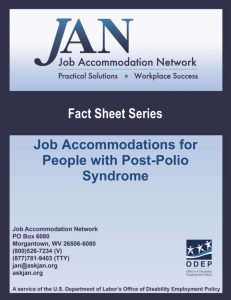
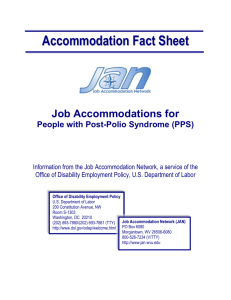
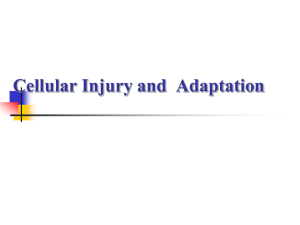


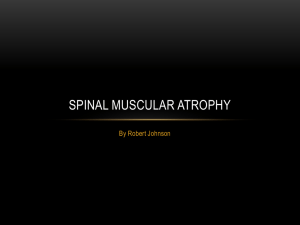
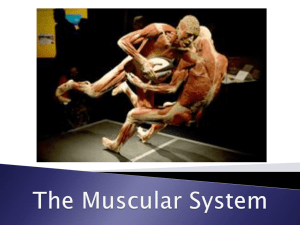

![013—BD Global [DOC 117KB]](http://s3.studylib.net/store/data/005892885_1-a45a410358e3d741161b3db5a319267b-300x300.png)

